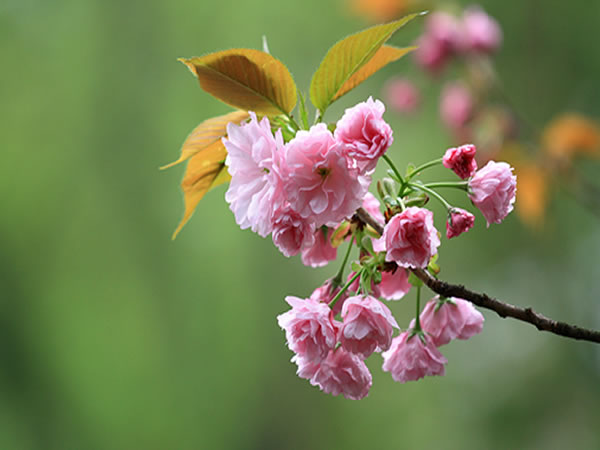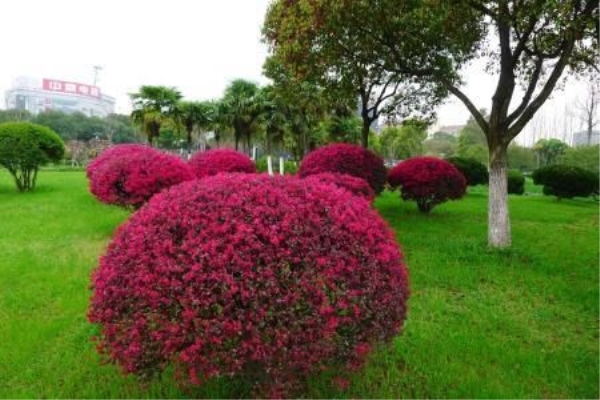Propagation methods of Carthamus tinctorius
Carthamus tinctorius mostly adopts the method of cutting propagation, and chooses the fields with good drainage, sufficient sunshine and fertile soil, and selects the branches with sturdy and full and prominent bud eyes from the strong mother plant to carry on cutting. Fully water the soil after cutting, then cover the film seal, keep the high temperature, high humidity and proper light and air in the shed, and wait for half a month to take root and sprout.

Culture method soil of Carthamus tinctorius
Carthamus tinctorius has strong adaptability and can tolerate barren, but it grows better in moist and fertile slightly acidic soil. In the soil, some mature organic fertilizer should be used as base fertilizer.
Light and temperature
Carthamus tinctorius likes light and warm climate. It can withstand cold and shade slightly. Carthamus tinctorius needs sufficient light, healthy growth and bright flowers and leaves, but it needs shade in summer to avoid direct sunlight, build a shed or keep the potted plants out of direct sunlight for maintenance, and be careful not to turn green. It is suitable to keep the growth temperature at about 20 ℃, but the temperature is low in winter, so it is better to put it indoors for the winter, and the temperature should be kept above 5 ℃, so we should pay attention to ventilation.
Water and fertilizer management
Carthamus tinctorius likes a humid environment and should be watered appropriately during its growth. The pot soil should not be too dry or too wet. General watering, summer needs more watering, but also pay attention to spraying, winter because safflower will dormancy so to reduce watering, but also can not be too dry. If you apply fertilizer, you can apply it every half a month during the growth period, and you can apply less or no fertilizer during the dormant period. Pay attention to safflower wood like acid, you can spray some ferrous sulfate solution, and apply some potash fertilizer before flowering.
Culture method of Carthamus tinctorius
Carthamus tinctorius is an evergreen shrub or small tree with dark gray or light grayish brown bark, leathery leaves, luxuriant branches, graceful posture, resistance to pruning and flat binding, can be used for hedges, can also be used to make stump bonsai, blooming season full of safflower, extremely spectacular, next let's take a look at the breeding methods of safflower trees!
Growth habits of Carthamus tinctorius
Carthamus tinctorius is mainly distributed in the middle and lower reaches of the Yangtze River and south of the Yangtze River, as well as in northern India, produced in Liuyang City, Hunan Province, Changsha County, Suzhou, Jiangsu, Wuxi, Yixing, Liyang, Jurong and other places. Like light, slightly resistant to shade, but the leaf color is easy to turn green when it is overcast. Strong adaptability and drought tolerance. Like warmth and withstand the cold. Strong sprouting and branching, resistant to pruning. It is resistant to barren, but it is suitable to grow in fertile, moist slightly acidic soil.
Propagation methods of Carthamus tinctorius
1. Grafting: grafting is mainly carried out by cutting and bud grafting, which can be carried out from February to October. It is better to cut before sprouting in spring, and bud grafting should be carried out from September to October. The small and medium-sized plants of Castanopsis carlesii were used as rootstocks for multi-head grafting to strengthen the management of water, fertilizer and pruning, which could be out of the nursery within one year.
2. Cutting: cutting can be carried out from March to September, and loose loess is selected as the cutting substrate to ensure that the cutting substrate is ventilated, permeable and high air humidity, keep warm but avoid direct sunlight, and pay attention to the ventilation and ventilation of the cutting environment. Under warm and humid conditions, the cuttings formed a red callus in 20-25 days, and a month later, 3-9 new roots with a diameter of 0.1 cm and a length of 1 cm were formed.
3. Sowing: when sowing in spring and summer, the seed germination rate is high, germinate about 25 days after sowing, grow to 6-20 cm high in one year, and shoot 3-6 branches. The new roots of seedlings are red and fleshy, which must be carefully managed in the early stage, and can not be managed extensively until the roots become lignified and brown. Because of its long seedling stage, slow growth and the emergence of albino seedlings (atavism), sexual reproduction is generally not used in seedling production, but in safflower breeding.
Cultivation management of Carthamus tinctorius
1. Fertilization: before transplanting Carthamus tinctorius, the base fertilizer based on rotten organic fertilizer should be selected, combined with spreading or hole application of compound fertilizer, and mix well to avoid root damage. In the growing season, the neutral foliar fertilizer 800-1000 times diluted was used for foliar topdressing and sprayed 2 times 3 times a month to promote new shoot growth.
2. Watering: Carthamus tinctorius should pay attention to keep good drainage in the southern plum rain season, ensure that it should be watered once in the morning and evening respectively in the high temperature and dry season, and cool down by spraying water at noon. In the north, because the soil and air are dry, it must be watered in time to keep the soil moist, pay attention to spraying water in autumn, winter and early spring, and keep the leaves clean and moist.
3. Pruning: Carthamus tinctorius has the characteristics of strong germination and resistance to pruning. Light to moderate pruning in early spring and early autumn, combined with normal water and fertilizer management, can blossom after about 1 month, and the florescence is concentrated. This method can promote the development of new branches and leaves, make the tree more beautiful, prolong the leaf red period, and promote and control the flowering period, especially suitable for safflower bonsai to participate in flower exhibitions and trade fairs. It can enhance the effect of the exhibition and promote product sales.
4. Plastic surgery
① artificial ball: the safflower sill wood is very resistant to pruning and disk binding and shaping, and the tree shape is mostly artificial ball. In the growing season, the mature leaves and shoots of red threshold wood were removed and the tender shoots could be extracted again after normal management for about 10 days, and bright red new leaves could grow.
② natural tufted shape: red sill wood has strong sprouting power and strong branching, and can grow into clumps naturally.
③ single stem round head shape: select a stout branch to cultivate into the trunk, remove the rest of the branches, when the trunk is as high as above, select a strong and upright branch as the extension branch of the trunk, that is, as the central trunk culture, and then select 4 or 5 strong branches which are evenly distributed around on the central trunk, and the branches are scattered up and down.
Culture method of Carthamus tinctorius
1. Isolated planting: select tall and plump plants to be planted in important positions or concentrated points of sight, such as near the entrance, in the courtyard or in the lawn, and pay attention to the strong contrast with the surrounding landscape, so as to achieve the effect of "a little red in the green clump". Can play the role of the central point of view of the landscape or guide the line of sight.
2. Cluster planting: embellishing safflower wood balls and other plants in clusters in the garden green space, which not only enriches the landscape color, but also activates the garden atmosphere. If it is planted in clusters with green tree species, it can play the role of icing on the cake, with safflower as the main tree species planted in groups to form a scenic forest, the unique leaf color and posture are very beautiful all the year round, and its beautification effect is far better than that of a simple green scenic forest.
3. Group planting: the seedlings of annual safflower trees are densely planted in the green space to form color blocks, which can be matched with golden leaf privet, spring rhododendron, summer rhododendron, golden leaf elm, Phnom Penh, etc., not only can form color contrast through leaf color contrast, but also the florescence can be staggered, this kind of use should choose transparent bone red strain.
4. Spherical: the safflower sequel is trimmed into a ball and arranged in the green belt, which is mainly divided into two types: hair ball and fine ball. The hair ball is mainly made after 1-3 years of trimming, which is mainly used in the management of slightly extensive large green space. The fine ball has to be trimmed for at least 3 years and is mainly used in delicate gardens such as villa courtyards.
5. Color hedges: color hedges are closely planted with safflower successors to fence and separate the space. Seedling specifications should be selected according to the specific use of color hedgerows. For example, color hedges of 70 cm to 80 cm can be selected in green space, while color hedges higher than 2 meters are mostly used as green walls in the periphery of green space.
6. Color carving: direct cultivation or modeling of safflower trees into green sculptures such as animals and geometric shapes, which are placed in the green space as garden sketches. For this kind of use, transparent red strains should be selected.
7. Pile scene: making use of the characteristics of fast growth, large leaves and sparse branches of double-sided safflower, it is directed to cultivate it into a large pile scene, which can be used in the greening of high-grade gardens and can also be used as the focus of flower beds.
8. Street trees: Carthamus tinctorius is cultivated into small colored-leaf trees by pruning control, and it can also be cultivated by grafting with alpinia mandshurica, which is mostly used as street trees in the community, and this kind of use should be used as transparent red strains.
- Prev

What diseases and insect pests do Japanese cherry trees suffer from?
Root nodule disease occurs on or near the root neck of the ground, resulting in short plants and poor growth. When the disease occurs, the root of the plant produces nodules of different shapes, showing brown, rough epidermis and often accompanied by cracks. The initial stage of anthrax.
- Next

Matters needing attention in breeding Carthamus tinctorius
When cultivating safflower trees, it is necessary to turn the basin regularly, and the soil can be changed when turning the basin to provide sufficient nutrients for the plant. pay attention to watering thoroughly when putting on the basin. Moreover, Carthamus tinctorius has strong germination and rapid growth, so it needs to be pruned to control the plant type and maintain its high appreciation value.
Related
- Fuxing push coffee new agricultural production and marketing class: lack of small-scale processing plants
- Jujube rice field leisure farm deep ploughing Yilan for five years to create a space for organic food and play
- Nongyu Farm-A trial of organic papaya for brave women with advanced technology
- Four points for attention in the prevention and control of diseases and insect pests of edible fungi
- How to add nutrient solution to Edible Fungi
- Is there any good way to control edible fungus mites?
- Open Inoculation Technology of Edible Fungi
- Is there any clever way to use fertilizer for edible fungus in winter?
- What agents are used to kill the pathogens of edible fungi in the mushroom shed?
- Rapid drying of Edible Fungi

